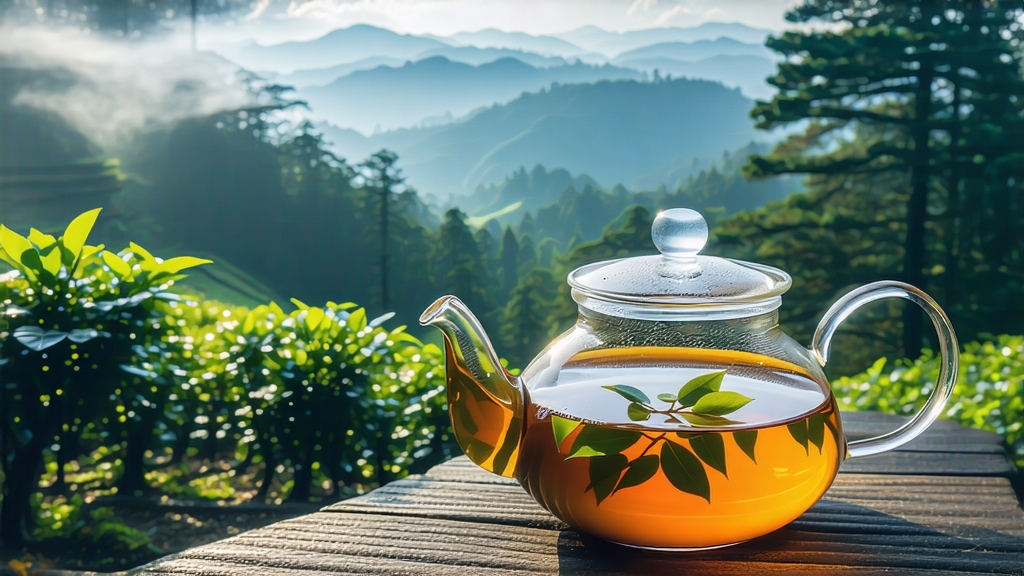
Rising like an emerald spine through the clouds of central Taiwan, the Alishan mountain range has been whispering tea stories since the late nineteenth century. While Chinese Fujianese immigrants first carried the Qingxin (Green Heart) cultivar across the strait in 1855, it was not until the 1980s that local agronomists, chasing the perfect intersection of altitude, humidity and temperature, pushed plantings above 1,000 m and created what the world now calls Alishan High-Mountain Oolong. Today these gardens, scattered between 1,000 and 1,400 m beneath a perpetual marine layer, yield a tea that embodies the island’s mist, cypress forests and volcanic soils in every silky sip.
Botanically, Alishan Oolong is a single-region style rather than a fixed cultivar, yet 90 % of plantings remain the heirloom Qingxin variety. Its small, thick leaves evolved to withstand cool nights, storing more amino acids and fragrant oils than lowland bushes. Farmers also experiment with Jin Xuan (Milk Oolong) and the newer Four-Season Spring, but purists insist only Qingxin grown within Chiayi County’s Alishan National Scenic Area can carry the legally protected name. Each spring and winter, two flushes are plucked by hand at dawn when leaf moisture is highest, ensuring pliable shoots for the intricate processing that follows.
The craft begins the moment baskets descend the mountain. Leaves are spread on bamboo trays and sun-withered for 20–40 min, depending on cloud cover, initiating enzymatic oxidation. Indoor withering in conditioned rooms follows, where artisans toss the leaves in tumbling motions every hour for 6–10 h; this bruises the edges just enough to invite oxygen while keeping the leaf center green. Oxidation is arrested at 20–30 %—the sweet spot between green tea’s grassiness and black tea’s malt—by a 300 °C tumble in gas-fired drums for 90 s. Next comes the signature “wrap-and-roll”: leaves are bundled in cotton cloths into 7 kg spheres and rolled under mechanical pressure for 3 min, opened, re-wrapped and rolled again up to 60 times over two hours. This laborious cycle twists leaves into tiny hemispheres and coaxes aromatic oils to the surface. A low-temperature bake (80 °C) dries the leaf to 3 % moisture, after which master roasters decide whether to leave the tea “light and floral” or subject it to a second, gentler charcoal firing. The latter, done over longan wood embers at 60 °C for 4–6 h, adds layers of honey, toasted almond and a whisper of smoke that lingers like violin notes in a concert hall.
Water is the silent ingredient. Alishan farmers swear by local spring water for cupping, but internationally the ideal is soft, neutral water brought to 95 °C. For gongfu style, use 6 g of leaf in a 120 ml porcelain gaiwan. Rinse once with a 5-second flash to awaken the compressed spheres, then steep 25 s, 35 s, 45 s, 55 s, adding 10 s for each subsequent infusion. The first liquor glows pale jade with a bouquet of white orchid and baby corn; by the third, color deepens to golden honey and flavors expand into lilac, buttercream and a cooling alpine sap that coats the throat. High-grade leaves yield 7–9 infusions, the final tasting like sweet rainwater on granite. Alternatively, Western drinkers may brew 3 g in a 300 ml glass pot for 3 min at 90 °C, sacrificing some aromatic complexity for convenience.
Professional cupping follows Taiwan’s Specialty Tea Evaluation standard: 3 g, 150 ml, 5 min, 100 °C. Judges sniff the wet leaf first, seeking a “high mountain rhyme”—a lingering, icy sweetness that arrives 30 s after swallowing. Liquor clarity should be brilliant, free of cloudiness caused by under-fixation. Aroma points are divided into floral (30), fruity (20), green (10) and roasted (10), while flavor rewards thickness, or “body,” measured by swirling the cup and observing how slowly the film of tea slides down the porcelain. The ultimate accolade is “wild ginseng aftertaste,” a faint, medicinal coolness that teases the tongue minutes later.
Storage is critical. Because Alishan Oolong retains 3–4 % moisture, it breathes